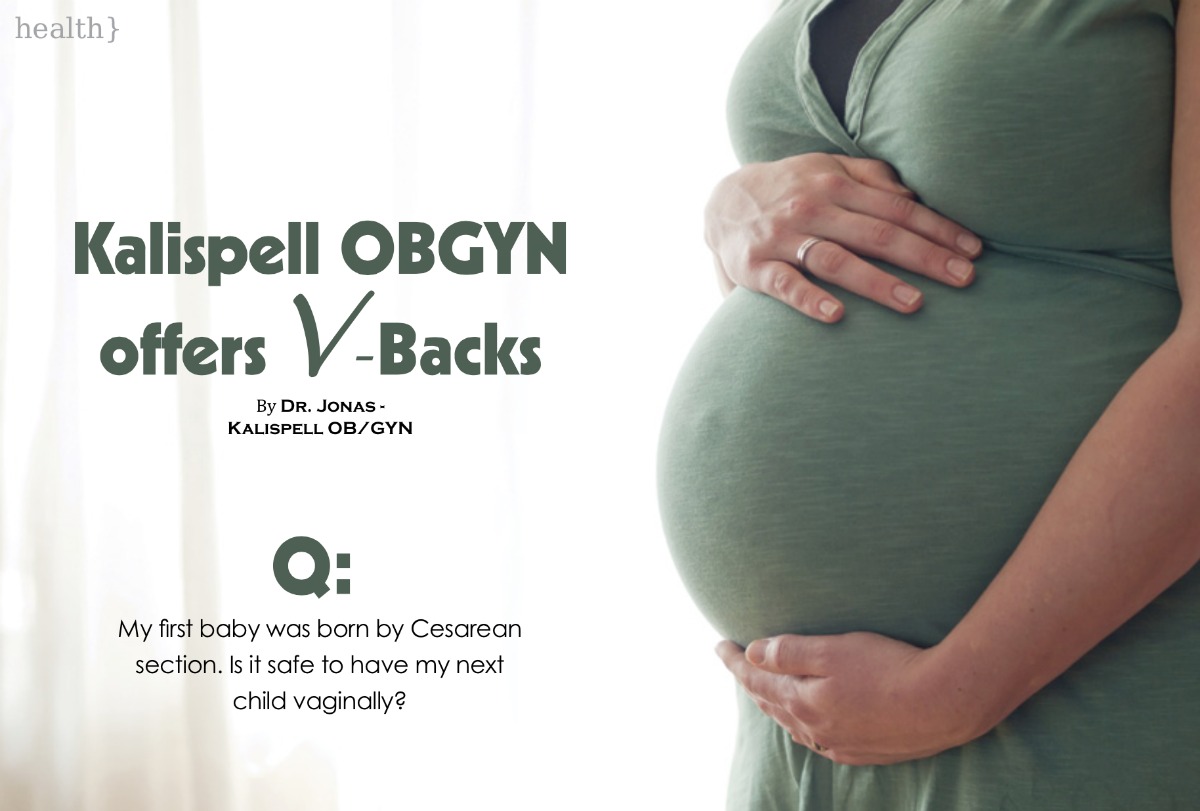Kalispell OB/GYN offers V-Backs

A:
That is a great question, and the answer is likely “yes.” Vaginal births after cesarean can be a wonderful option for most women. If you had your first baby by Cesarean section, you have two options for your next delivery. You may labor with the goal of having your baby vaginally. If you are successful, this is known as a VBAC. Or, you may elect to have another cesarean as early as one week prior to your due date. While VBACs are generally very safe, there are aspects of each woman’s personal history, health and pregnancy that affect both the amount of risk and her chances of success.
Obstetricians generally agree that if a woman is felt to have a high chance of success and a low risk of complications, she should be offered a trial of labor. There is a great deal of research to support the safety of a VBAC if a woman has had no more than 2 cesareans of the “low transverse” (or side-to-side) incision type. Women carrying either a single baby or twins (if the first baby is head down) are candidates for a vaginal delivery.
The benefits of a vaginal birth after cesarean delivery are great and include avoiding another surgery, quicker recovery, less blood loss, less risk of infection, and a more family-centered experience for the birth of your baby. If you are planning a large family, avoiding a cesarean delivery will decrease your risks of complications for future deliveries. In general, 60-80 of every 100 women attempting a vaginal birth after cesarean will be successful.
Factors affecting your chances of delivering vaginally include your age, your weight, your baby’s weight, if you have had a vaginal delivery before, and the reason for your previous cesarean.
In particular, if your previous cesarean delivery was for a reason not expected to recur (such as breech presentation, stress of the baby, or placenta in an abnormal location) or if you have had a vaginal delivery before you stand a greater chance of having your next baby vaginally. On the other hand, if you are well over your ideal body weight, your baby is very large, or your previous baby would not fit despite appropriate labor, your chances of success are lower. There are calculators recently published that allow you and your provider to estimate your chances of success.
There are, of course, risks associated with a trial of labor and these risks should be carefully balanced against the benefits. The most significant risks include distress of the baby, or “rupture” of the previous scar which can cause a life-threatening situation for both mother and baby and requires emergent surgery to deliver the baby. Thankfully, the risk of uterine rupture is very low for most women – generally believed to be less than one percent. A woman’s risk of severe complication, including rupture, is known to be higher in certain situations. The most common of these situations is if you have had any surgery on your uterus that required a large incision into your uterus other than a low transverse cesarean delivery. In this case, it is not recommended for you to attempt a vaginal delivery.
If you are planning a trial of labor, there are two things you should take very seriously: the choice of your labor attendant and the location of your care. If you are considered low-risk, your chance of a uterine rupture is very low, but it does occur. When it occurs, it often happens with very little warning and extremely rapidly. The signs and symptoms may be subtle at first. Because it occurs rarely, you will be best served by a physician that has taken care of many women attempting a trial of labor and that is trained to perform life-saving surgical delivery if needed. They will have the greatest chance of recognizing any complications and moving quickly to keep you and your baby safe. You should be in a location where surgical response is available immediately with a surgical crew, and anesthesiologist in the building. This by definition is a hospital setting. These things will allow your labor to proceed in the safest manner possible.
There has been a recent trend to attempt vaginal birth after cesarean in an out-of-hospital environment with a non-physician as the labor attendant. There is no data to indicate that a woman has a greater chance of success in this environment. If a uterine rupture occurs in a birth center separate from the hospital the chances of life-threatening consequences are very real. Precious time will be lost recognizing the crisis and transporting the pregnant woman to the hospital. Please, consider both your child’s, and your own, life and health very carefully as you make your plans. I am a strong believer in vaginal birth after cesarean, and I would urge all women to choose the absolutely safest environment for their trial of labor.
You and your provider should decide if a trial of labor is a safe option for you. If you do not routinely see a physician for your care, I would recommend that you ask for a referral, or make an appointment yourself, to discuss the risks, benefits, and alternatives and your chance of success. Obstetricians have the greatest experience with both the decision process and trials of labor. They can be a wealth of information as you are considering your options
This has not been meant to be a list of everything you need to know about VBAC but a brief overview. For more information, I would recommend visiting the website of The American College of Obstetricians and Gynecologists, http://www.acog.org/Patients, or UpToDate, http://www.uptodate.com/home.
I wish you the very best for your next pregnancy and delivery!
______________________________________________________________________________
Dr. Jonas is a contributing writer on women’s health issues for 406 Woman Magazine.
